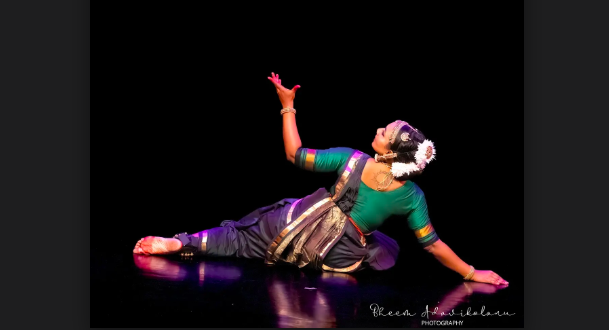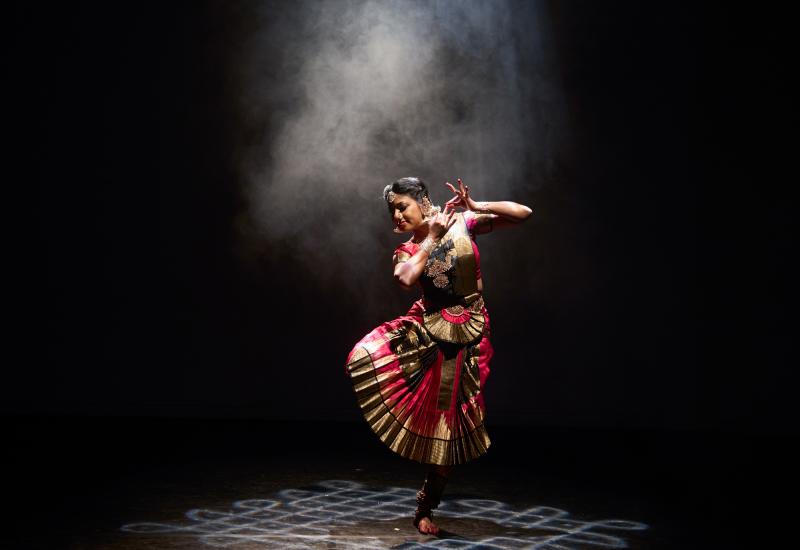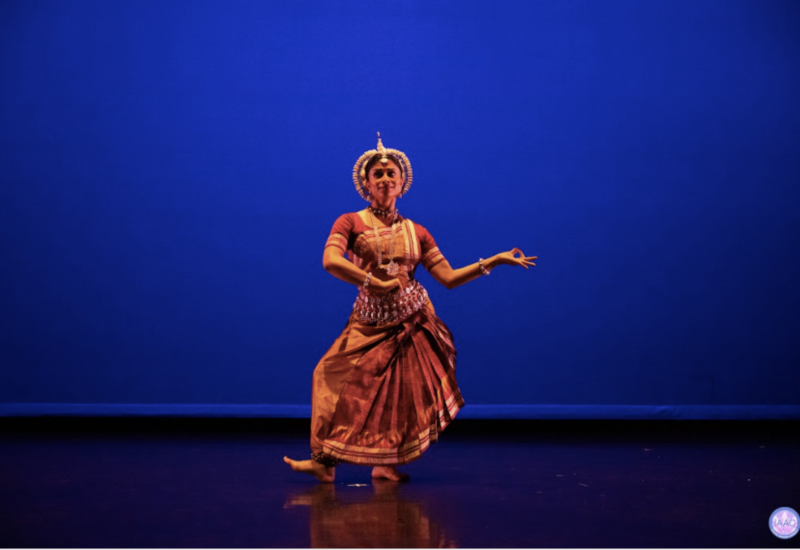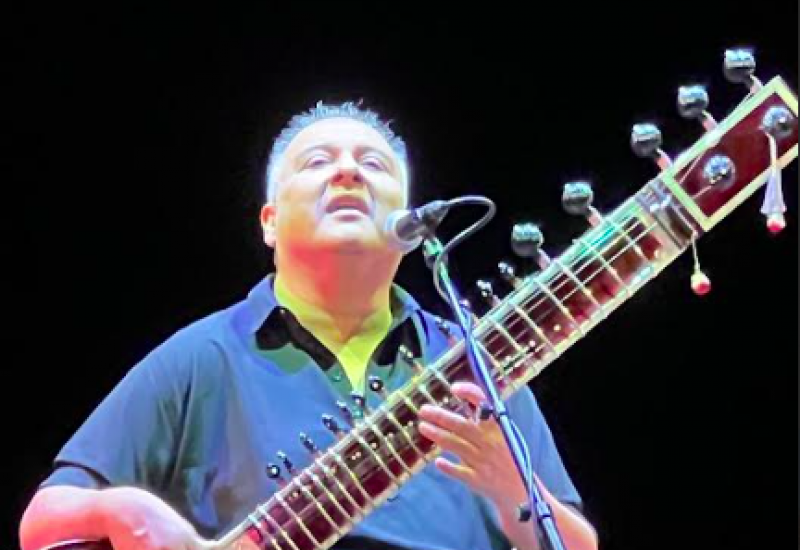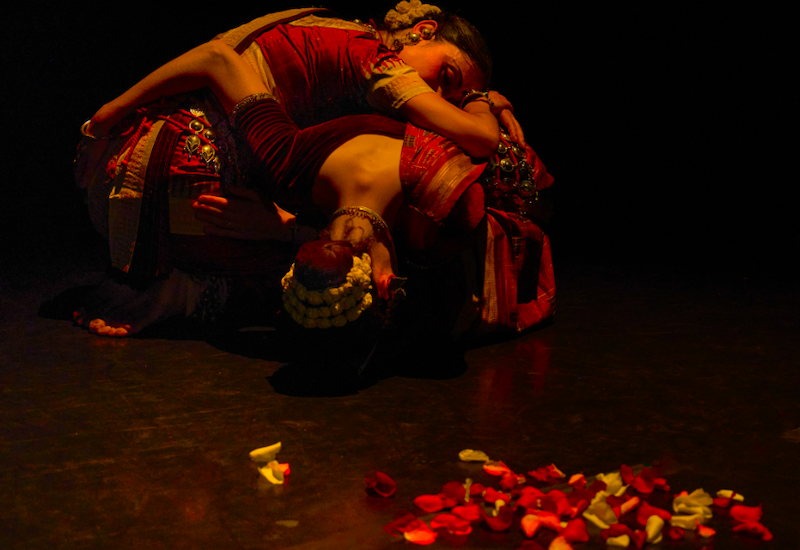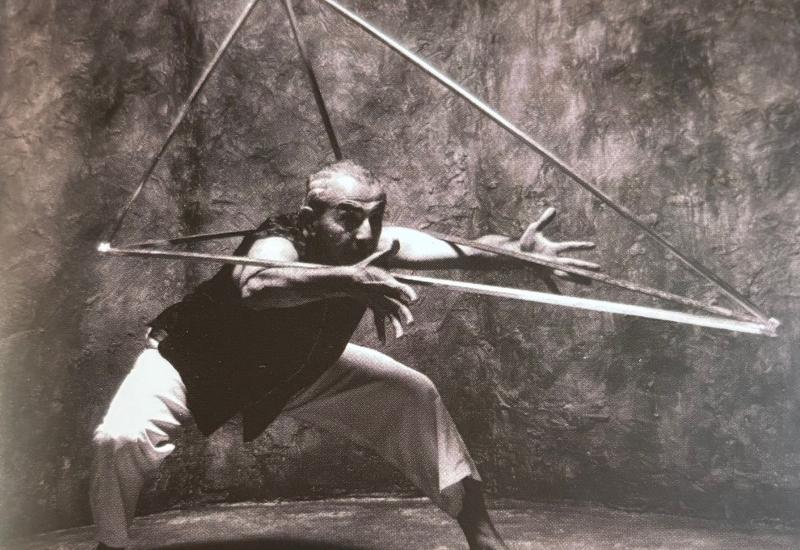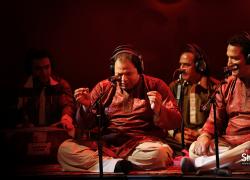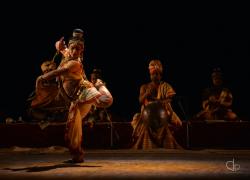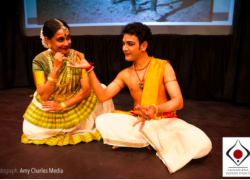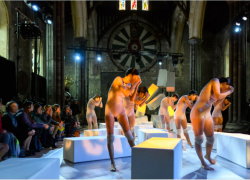Dvanda – Amritha Jayakrishnan
Dvanda
Amritha Jayakrishnan
6th April 2025
Bhavan, London.
Dvanda, a themed solo bharatanatyam performance by Amritha Jayakrishnan, promised to be a show exploring the concept of duality that is all pervasive in life.
We eased into the evening with a mellow rendition of an invocation to Ganesha, the elephant-headed God, the remover of obstacles. The first dance item was a composition by Sage Pathanjali in praise of Lord Shiva sung in the style of a ‘viruttham’ (hymn) set to the dramatic Ragam Revathi. This had a trance-like quality with Amritha striking powerful poses followed by the Dance of Shiva – Shambu Natanam.
The centrepiece of the evening was the classic Tanjore Quartet varnam, ‘Manavi che konnara’, in Ragam Shankarabharanam written by Ponnaiyah Pillai. The heroine asks Shiva, ‘O, why are you angry with me, while I pine for you?’ Amritha’s grip of laya and the rendition of theermanams (pure dance sequences) was impeccable and brought forth her maturity and experience as a performer. However, the strong kuchipudi flavour, high usage of poses, bramaris and ‘filler’ adavus, while adding a ‘wow’ factor to the performance, did so at the expense of the grounded nature of a classical bharatanatyam performance. Amritha has an expressive face and her abhinaya showed flashes of well-choreographed, highly rehearsed, sequences of expressions of the Kalanidhi bhani of abhinaya as would be expected of a student of Smt. Vidhya Subramaniyam. However, a lack of continuity of sthayi bhava (foundational emotion) meant it was hard to be drawn into the journey of the varnam.
The next item, ‘Ardhanari’ explored the masculine and feminine energies through the verses of Aadi Shankaracharya’s ardhanari stotram. Similar to the introductory item, set to the attractive Ragam Poorvikalyani, this piece started with a ‘viruttham’ followed by applause eliciting step sequences ending with a contemporary flourish depicting duality. This reminded one of the theme of the evening, duality, which hadn’t made its presence felt up until this point of the performance.
Next was an unusual combination of two compositions depicting a conversation between young goddess Parvati and her mother Queen Mena. ‘Varathirundhal’, a composition by Smt Ganthimathi Pillai describes how Parvati wants to continue playing outdoors while her mother tries to persuade her to come indoors, tempting her with treats, in vain. Amritha did an excellent portrayal of the playful Parvati running rings around Queen Mena, dodging her mother’s attempts. Exhausted and perplexed, Queen Mena then starts to plead with Parvati, which was articulated through the popular Papanasam Sivan composition ‘naan oru vizhayattu bommaya’ - am I a doll for you to play with? The original composition, written as a devotee pleading with the goddess, perfectly suited Queen Mena’s pleading with Parvati, as the mother of the goddess is indeed a devotee of her child. In this composition Amritha, who also choreographed the abhinaya for the second piece, demonstrated her capacity to transform from a naughty child to a perplexed mother seamlessly and take the audience on a journey of multiple emotions through a mother-daughter interaction.
The evening ended with a high-energy thillana, the rajarajeshwari ashtakam, a composition of Rajkumar Bharathi. While the usage of multiple ragams and thalams is, in principle, attractive, this composition ultimately conveyed more confusion than a coordinated sophistication. With the lack of a clear format, this thillana despite its high energy did not appeal to a traditionalist.
Amritha’s performance was expertly supported by Smt. Pallavi Anand on nattuvangam, Sri. Vamshi Krishna Vishnudas on vocals, Sri. Prathap on mridangam and Sri. Vijay Venkat on the flute. Needless to say, this ensemble is the best available in the UK, however, a greater grip of the voice in higher octaves and employing tonal variation while rendering the theermanams would have enhanced the show significantly.
Conceptually, duality provided extraordinarily rich grounds for exploration, of which we only had a few glimpses in the entire evening. Overall, despite the many little things which could have made the show excellent, it was an enjoyable evening which left one with the satisfaction of immersing oneself in the world of Indian classical dance.

